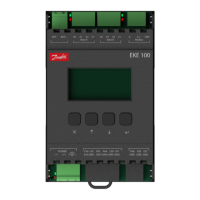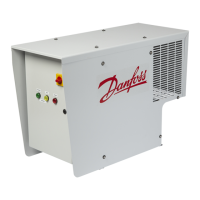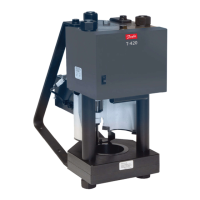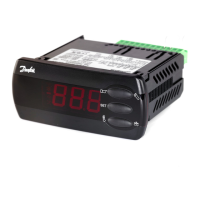D
GB
F
E
PT
I
TR
Ru
© Danfoss | Climate Solutions | 2023.07
AQ453249013813en-000201| 17
Since changing the shaft seal involves encroaching into the
refrigerant circuit, this is only recommended, if the seal is
losing refrigerant, or if oil is escaping in excess of the per-
missible amount (see information on page 15, chapter 5.7,
"Shaftseal").Changingtheshaftsealisdescribedintherel-
evant spare part kit.
Emptying the oil reservoir: The oil reservoir can be emptied
very simple without having to dismantle the coupling and/or
belt drive. It is recommended that this is done at the same
time as the air-conditioning maintenance and motor service.
To proceed, detach the oil hose from the bracket, remove the
sealing plug and drain the oil into a collecting vessel. After
emptying, reseal the oil hose and clamp it into the bracket.
Dispose of the used oil in accordance with national
regulations.
6.3 Shaft seal, emptying the oil reservoir
Fig. 16
6| Maintenance
Whererequirementsarehigherduringuse(frequentoperationatthelimitsofapplication,or
inhotlandswithover+40°Cambienttemperature,orinthecaseofdeepfreezing),thefollowing
requirementsmustbeobserved:
•Initialoilchangeduringtherstmaintenanceofthevehicle(atthelatestafteroneyear)
• Then an oil change after every 2,000 operating hours, at the latest however after two years. Also
cleantheoillter.
Preventive maintenance
Theaboverequirementsforhigheruseapplicationsalsoapplyinthecaseofpreventive
maintenance. The shaft seal must also be changed after 3 years.
Regular inspections (at least annually): Checks to be carried out on oil level in the oil sight
glass,oilllleveloftheshaftsealintheoildrainhose,absenceofleaksinthecompressor,running
noise, vibrations, pressures, temperatures, and functioning of auxiliary devices such as the capacity
control.
The shaft seal is a wearing part, and its service life depends on the prevailing conditions.
Damaging effects on the shaft seal:
• Too little suction gas superheat, particularly during wet operation
• Too high or too low belt tension
•Thermaloverload(operationoutsidethelimitsofapplication)
•Frequentcycling
• Long periods of stoppage
• Material deposits / dirt from the system
Due to these effects, the shaft seal can develop leaks, and it must then be replaced.

